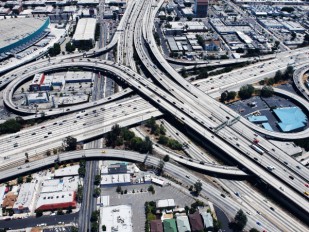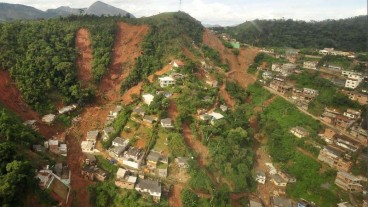Using biometric data to make urban infrastructure safer

A new study focuses on utilizing biometric data to evaluate urban infrastructure safety and prevent accidents.
The COVID-19 situation enabled people to be less depended on public transport and utilize bikes or walk for daily commuting. Unfortunately, an increase in accidents was observed. The study emphasizes the need to develop proactive techniques to make the existing urban infrastructure safer for people.
The safety of urban infrastructure has been evaluated via static data such as crashes or fatality rates. This statistical approach is the traditional manner to determine the risk of the existing infrastructure (e.g., crossing a road) and has resulted in its categorization into low or high hazard regions. However, the new research suggests that the evaluation of safety can be much more precise if individual-based metrics are incorporated. Such an endeavor would aid in making urban infrastructure safer for the all the people involved (e.g., drivers, pedestrians, bicyclists etc.).
The current approach used in transportation infrastructure in the United States (where the study focuses) suggests that an intervention at an unsafe crossing will be considered if the crossing is crowded enough accommodating 90-100 pedestrians per hour or if at least 5 accidents occur. Dr. Megan Ryerson, lead author of the study and Associate Dean for Research, Weitzman School at the University of Pennsylvania, is not willing to wait for such accidents to strike so that measures can be taken. Instead, she suggests that we should be reactive in safety planning of infrastructure. She also emphasizes that the current technological means and analytical tools have significantly developed over the past years and innovative approaches to use the data are available.
In 2018, the research team employed 39 cyclists that travelled certain routes in Philadelphia. The riders were equipped with a specially designed camera and a gyroscope that took 100 measures per second. The routes that were selected presented various safety features from protected bike lanes to completely unprotected paths. The purpose of this mixture was to enable the people involved in the tests to experience “a range of transportation-infrastructure designs which may elicit different stress and cogitative workload responses”.
The team derived a correlation between increased biometric responses and regions where high number of accidents occur. The authors suggest that, in places where cognitive workload is required, an individual is more prone to pay less attention to new information and, thus, accidents are less probable to be avoided. Moreover, scientists found out that there are inconvenient areas where people are stressed. Those areas are the same for people of low or high experience in using the routes and solely depend on the infrastructure design standards.
Conclusively, the study emphasizes the need for urban infrastructure safety design to be more proactive. Current safety measures implementation comes after accidents occur but, the existing technology enables preventive works. More biometric data collected in problematic areas will result in better understanding of where and how to apply safety measures.
Sources: Ryenson et al. (2021) UPENN
Sources: Ryenson et al. (2021), UPENN
Want to read more like this story?

Impact of roadway infrastructure on human life risk
Oct, 25, 2019 | NewsA new study, published in Journal Accident Analysis & Prevention, focuses on the impact of roadw...

Road safety increased due to cycling lanes
Jun, 28, 2019 | NewsA detailed study shows that cycling lanes have made the roads safer for everyone. Scientists from...

Plan for $760 billion investment in U.S. infrastructure
Jan, 29, 2020 | NewsA 5-year plan to invest $760 billion in United States infrastructure was revealed on January 29...

Different urbanization patterns in large cities worldwide
Oct, 23, 2020 | NewsA new study reveals dissimilar urbanization patterns in large cities all over the world during the p...

New study explains how global warming significantly increases the size of floods
Feb, 03, 2020 | NewsAccording to new research evidence, warming environment leads to more rainfalls and less snow accumu...
"Introducing the Berkeley Center for Smart Infrastructure", part of "The future of Infrastructure today!" webinar series
Oct, 15, 2023 | EventLecture date: Friday November 3, 9:00-10:00AM PST The “Future of Infrastructure today!” is a mo...

"Introducing the Berkeley Center for Smart Infrastructure", part of "The future of Infrastructure today!" webinar series
Oct, 13, 2023 | EventLecture date: Friday November 3, 9:00-10:00AM PST The “Future of Infrastructure today!” is a monthl...

Risk assessment of rainfall-induced landslides in urban regions
Nov, 01, 2021 | NewsA new study suggests that urban areas are more prone to rainfall-induced landslides compared to rur...

Pioneering the Future of Construction Health & Safety: Global Trends for 2025
Jan, 10, 2025 | NewsThe construction industry worldwide is undergoing a transformation driven by technological innovati...
Trending

Vertical gardens in Mexico City to combat pollution

Saudi Park Closed After 360 Big Pendulum Ride Crashes to Ground, 23 injured

Characteristics of Load Bearing Masonry Construction

Taipei 101’s impressive tuned mass damper

Dutch greenhouses have revolutionized modern farming

Federal court rules Biden’s offshore drilling ban unlawful


